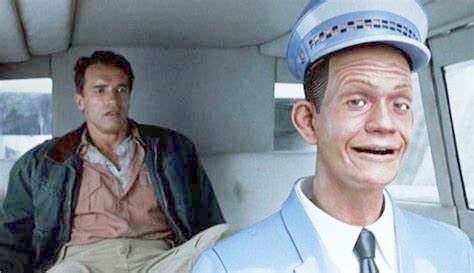Elon Musk, Tesla’s Chief Executive Officer, has articulated an ambitious vision that seems plucked straight from science fiction, specifically the “Johnny Cab” from the 1990 movie Total Recall. Musk is envisioning a fleet of autonomous vehicles, specifically a future model of Tesla that operates similarly to Uber’s ride-hailing service but without the need for human drivers.
The futuristic transport, and its current development status, was recently profiled in The Wall Street Journal.
Musk intends his automotive design to be absent traditional components like steering wheels and pedals. He envisions it as a significant step in his long-term plan to revolutionize transportation.
How Tesla Robotaxis Will Impact the Banking Industry
Other than representing a bold step into the future of transportation, Musk’s dream project has significant implications for the banking industry.
When autonomous vehicles are eventually brought to market, they will bring with them new avenues for financing and insurance products. Banks that adapt to these changes can capture new business opportunities, both by financing the vehicles themselves and by engaging with the broader economic ecosystems that such innovations foster.
Regulatory and Technological Hurdles Facing Tesla Robotaxis
Despite the futuristic allure of Tesla’s robotaxi plans, advancing it will require navigating some significant challenges.
Regulatory frameworks are still catching up to the rapid advancements in autonomous vehicle technology, creating a complex road for Tesla to steer through. Also, the technology underpinning autonomous vehicles is still in development, necessitating human oversight in situations that the vehicles’ algorithms cannot yet handle.
Can Tesla Deliver? Musk’s Robotaxi Challenges
Musk’s enduring optimism about autonomous vehicles has been both a hallmark of his vision and a source of controversy, owing to past deadlines that have gone unmet.
The project’s current focus is firmly on overcoming the regulatory and technical challenges to make autonomous taxis viable. In the former category are the evolving patchwork of rules that govern autonomous vehicles from agencies that include the National Highway Safety Administration and oversight on various state levels. The latter issues result from the need to push the boundaries of current technological capabilities.
Robotaxis: Economic Prospects and Safety Concerns
A successful robotaxi rollout could unlock a $2-trillion global transportation market by 2030, according to a CNBC report.
From a safety perspective, however, advancement has been cautious.
Current Tesla models do feature some form of self-driving capabilities; however, the technology is not wholly autonomous. Furthermore, the company’s approach to collecting data to enhance self-driving technology continues to face scrutiny, especially in light of incidents that have spurred regulatory actions.
All In on Autopilot: Musk’s Unwavering Commitment to Robotaxis
Despite the fits-and-starts progress, Musk has unequivocally committed to mastering autonomous vehicle technology. He’s so sure of being able to successfully bring the capability to market, he has asserted that skeptical investors should reconsider their financial ties to Tesla itself.
Additional detail on Elon Musk’s pursuit of robotaxi manufacturing and marketing autonomous vehicles can be found at The Wall Street Journal.



















